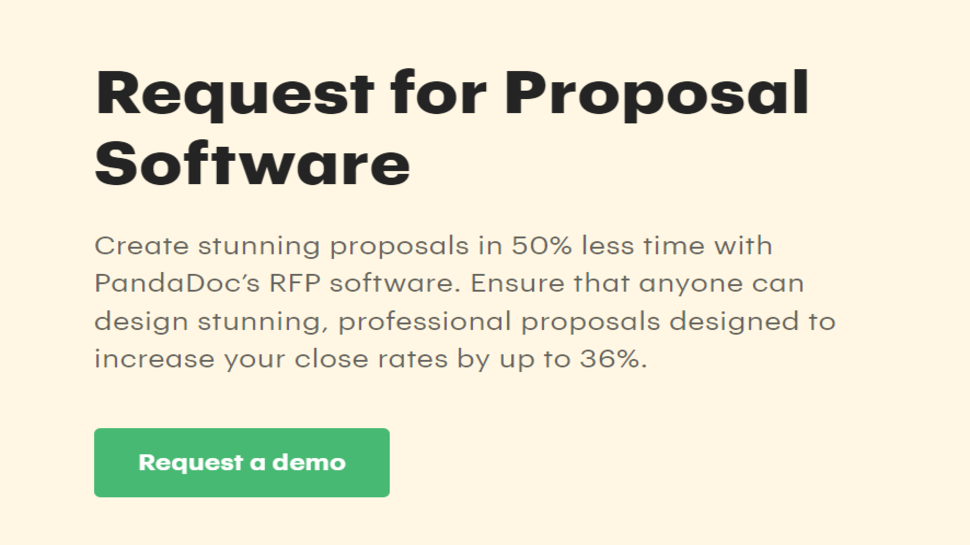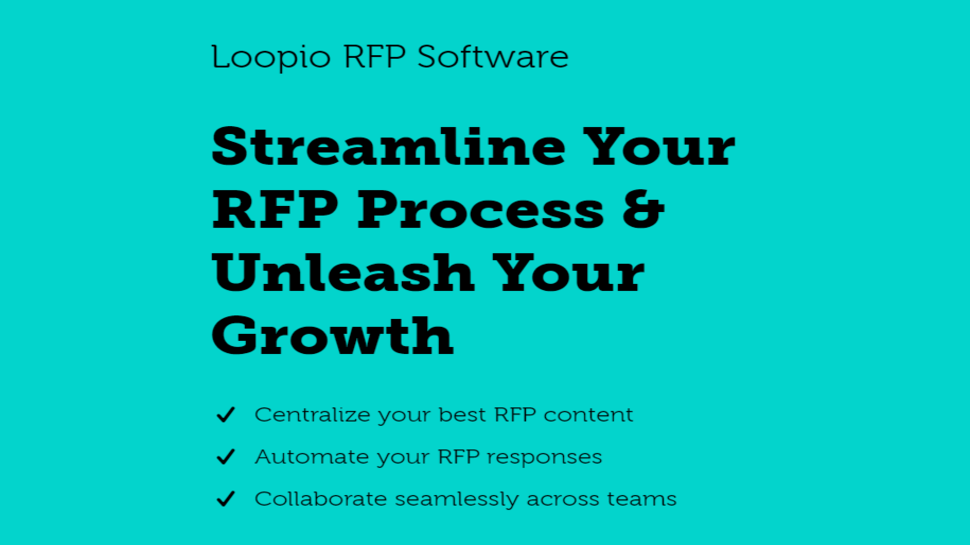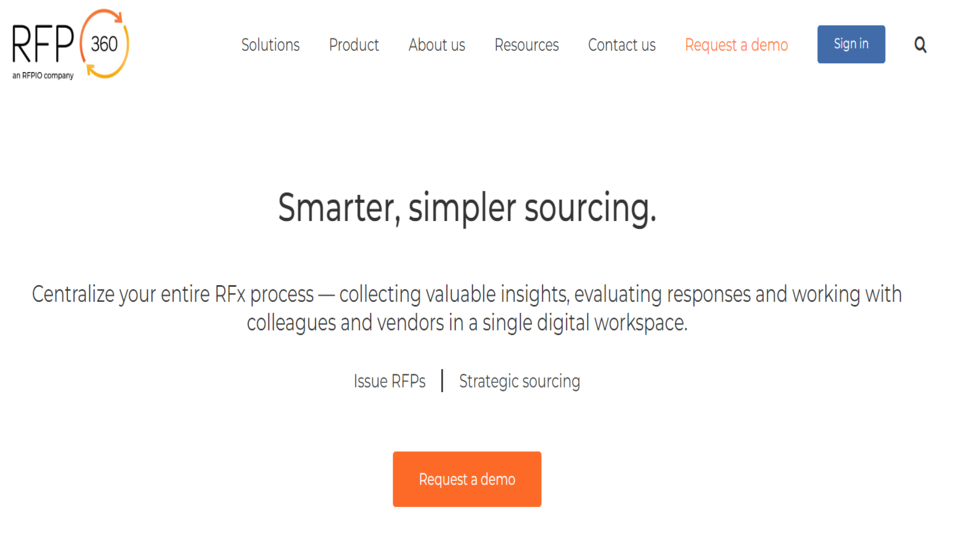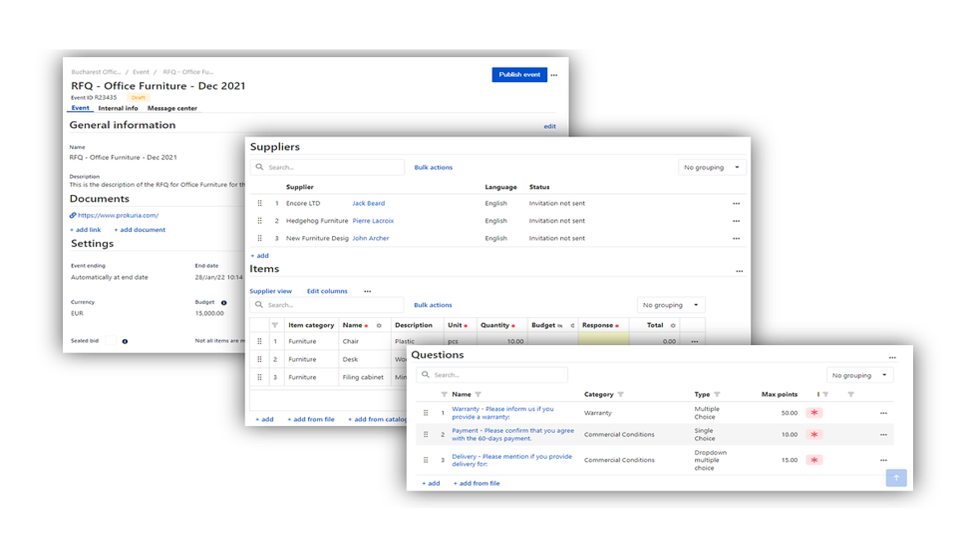Best RFP platform of 2025
Simplify soliciting proposals

We list the best RFP platforms, to make it simple and easy to simplify the Request For Proposal (RFP) process when soliciting for proposals and tenders.
Request for proposal (RFP) is a popular business terminology. It refers to a document soliciting proposals for a job a company wants someone else to fulfill.
For example, if a large-scale manufacturer wants to build a new factory, they’ll issue an RFP to construction companies. The construction companies will submit proposals and pass through a bidding process, and the company will decide which one to select.
The RFP system existed long before the digital age, but software has made it much easier to handle. The manual RFP process was much more cumbersome; companies announced RFPs via newspapers, billboards, flyers, etc., and companies submitting proposals had to contact them manually. However, RFP software enables companies to handle everything in one place. They can automate as much as 80% of the RFP processes by using the software.
RFP platforms make it easy to create requests that people can easily understand, and multiple people across different departments can collaborate in the creation process. Similarly, they enable vendors to easily respond to requests with their proposals.
We tested different RFP software to identify the best ones. We narrowed our list based on important factors, including pricing, features, scalability, customer support, etc. These tools have their pros and cons, but are, overall, very effective for RFP management.
We've listed the best document management software.
The best RFP platform of 2025 in full:
Why you can trust TechRadar
Best RFP platform for templates

1. PandaDoc
Reasons to buy
Reasons to avoid
PandaDoc is best known as a document management platform for enterprises. It enables businesses to create, manage, and electronically sign documents with ease. The platform offers a software solution that makes it easier to create RFP proposals.
PandaDoc offers a large collection of RFP templates designed by professionals. Instead of building yours from scratch, you can simply choose a template and edit it to fit your tastes. If you have the skills, you can build your own template from scratch and reuse it as many times as you want. The platform claims to reduce document creation time by 50% and increase RFP close rates by 36%.
PandaDoc is keen on collaboration. Multiple people can work on the same RFP documents simultaneously. They can leave comments for each other, tag each other, and make real-time changes. You can access this platform from a web-based interface or mobile app, whichever is convenient for you.
Best RFP platform for ease of use

2. Loopio
Reasons to buy
Reasons to avoid
Loopio bills itself as an RFP software for growth-focused companies. It’s used by hundreds of companies around the globe, many of whom praise it for its ease of use and simplicity.
Loopio gives users a structured RFP library to manage all their content. This library makes it easy to publish RFPs, organize them, and update them when needed. People can view your RFPs and easily respond to them. Loopio supports multiple languages, which makes it an ideal platform for global businesses.
Another good thing about Loopio is its automation. It enables you to automate mundane RFP tasks and focus on the more complex, high-value ones. For example, Loopio incorporates an artificial intelligence tool that can suggest answers to common questions. If you’re a vendor trying to respond to many RFPs, this automated response tool cuts down your work.
Loopio doesn't have standard pricing. You'll need to contact the company for a quote, and your final bill will depend on many factors including features and number of users. But you can book a demo to test the features before making your final decision.
Best RFP platform for collaboration

3. RFP360
Reasons to buy
Reasons to avoid
RFP360 is a platform that enables companies to centralize their entire RFP process. It makes it easy to develop and issue RFPs and gather responses from vendors. It has a content management system that multiple people can work on. This system includes a library of templates built by professionals that you can edit to create your own RFPs. You can assign tasks to different users, set deadlines, and communicate with people across different departments.
RFP360 gives you deep insights into your RFP projects. You can score and compare responses and monitor all the metrics from a single dashboard. You’re free to download and export reports for external use.
It’s important to evaluate your vendors for security risks, and RFP360 lets you do that easily. You can import security questionnaires or use existing templates to request information from vendors. This platform also has integrations with third-party security management tools, so interested vendors can simply export reports of their cybersecurity compliance.
RFP360 doesn’t have standard pricing, so you’ll need to contact the sales team for a custom quote. You can request a demo to test its features before deciding whether to pay or not.
Best RFP platform for response

4. RFPIO
Reasons to buy
Reasons to avoid
RFPIO is a very popular RFP platform focused on response management. It makes it easy for businesses to respond to RFPs and get new deals. You can create a Knowledge Library for your sales team containing all information they’ll likely need in the sales process. When pitching a proposal and specific information is requested, they can simply consult that Knowledge Base to find it.
RFPIO enables you to manage your RFP-related content from one central hub, and multiple people can collaborate on the same document simultaneously. Users can assign tasks to each other, set up review cycles, and track project statuses in real time. RFPIO lets you upload many types of documents and works in nearly 20 languages.
This platform is very secure. It supports two-factor authentication and Single Sign-On, which guarantee extra security for enterprises. This platform has integrations with many third-party tools, e.g., Microsoft Outlook for emails, Jira for task management, and Slack for workspace collaboration.
You’ll need to contact RFPIO’s sales team for a custom quote because there’s no standard pricing. This platform is known to be expensive relative to the competition.
Best broad RFP platform

5. Prokuria
Reasons to buy
Reasons to avoid
Prokuria is a procurement management platform as the name hints. It has a very broad feature set, including letting companies create RFPs and solicit responses from vendors. This platform gives you an effective content management solution to create your RFPs. You can upload different types of documents, and multiple users can collaborate to create RFPs.
You can create RFP templates from scratch and reuse them as many times as you wish. You can also choose from existing templates and edit them to fit your tastes.
Prokuria has different pricing plans; Basic, Standard, and Premium. The Basic plan does not have RFP features, so you must select either the Standard or Premium option. One disadvantage we observed is that you need to pay extra for certain features, such as to remove the Prokuria branding from your software and use your own logo.
We've listed the best IT documentation tool.
Best RFP platform FAQs
How to choose an RFP platform
Cost
Cost is the first thing to consider when choosing any software tool. It’s important to select a platform that you can afford in the long term. RFP platforms usually charge a fixed monthly or annual fee for each user, making it easy to estimate how much you’ll pay. Yet, ensure you read the fine print to see if there are any hidden charges. Check if there’s a free trial to test the platform’s features before making a payment.
Collaboration
Creating professional proposals requires collaboration between people across different departments of a company. Hence, your RFP platform should support seamless collaboration. Different people should be able to work on the same documents simultaneously and monitor real-time changes.
Scalability
Your RFP platform should perform well even as your business needs grow. As the company grows, you’ll likely need to send much more RFPs, and the software should allow you to do this without sacrificing performance.
Ease of use
Your platform should have an intuitive interface that’s easy to understand and navigate. Any platform with a complex interface can frustrate users and lead to costly mistakes.
Essential features of an RFP platform
Content management
Content management is the first essential feature of an RFP platform. It should enable you to store, update, and organize your content from a central hub that everyone in your team can access. You should be able to create RFP templates that you can reuse at any time.
Analytics/reporting
You should be able to monitor the progress and performance of your proposals. Your platform should let you view important metrics such as response times, feedback scores, win rates, etc. You should also be able to download reports and export them for external representations.
Security
You’ll be uploading sensitive data to your RFP platform, so it needs to be as secure as possible. Ensure it has standard security features such as data encryption and an SSL certificate. It should also comply with data regulations such as GDPR and HIPAA (if you're in the medical field).
Customer support
Your RFP software provider should offer support and training for your staff. You should have access to support resources such as user manuals, video tutorials, webinars, blogs, etc. You should also be able to contact human support representatives when needed.
How we tested the best RFP platform
We test by evaluating numerous factors. To start with, we look at the feature set, the range of tools available, and what size of businesses this would be ideal for. We consider how easy the setup is, the simplicity of the interface, and whether there's sufficient documentation and tutorials for users to utilize necessary options optimally.
We assess how well the service integrates with other relevant apps, and check the overall scalability of the service. We also analyze whether there are collaboration features for multiple users, and lastly, we judge the quality of the customer service and the different pricing plans available.
Read more on how we test, rate, and review products on TechRadar.
Get in touch
- Want to find out about commercial or marketing opportunities? Click here
- Out of date info, errors, complaints or broken links? Give us a nudge
- Got a suggestion for a product or service provider? Message us directly
- You've reached the end of the page. Jump back up to the top ^
Are you a pro? Subscribe to our newsletter
Sign up to the TechRadar Pro newsletter to get all the top news, opinion, features and guidance your business needs to succeed!
Stefan has always been a lover of tech. He graduated with an MSc in geological engineering but soon discovered he had a knack for writing instead. So he decided to combine his newfound and life-long passions to become a technology writer. As a freelance content writer, Stefan can break down complex technological topics, making them easily digestible for the lay audience.
